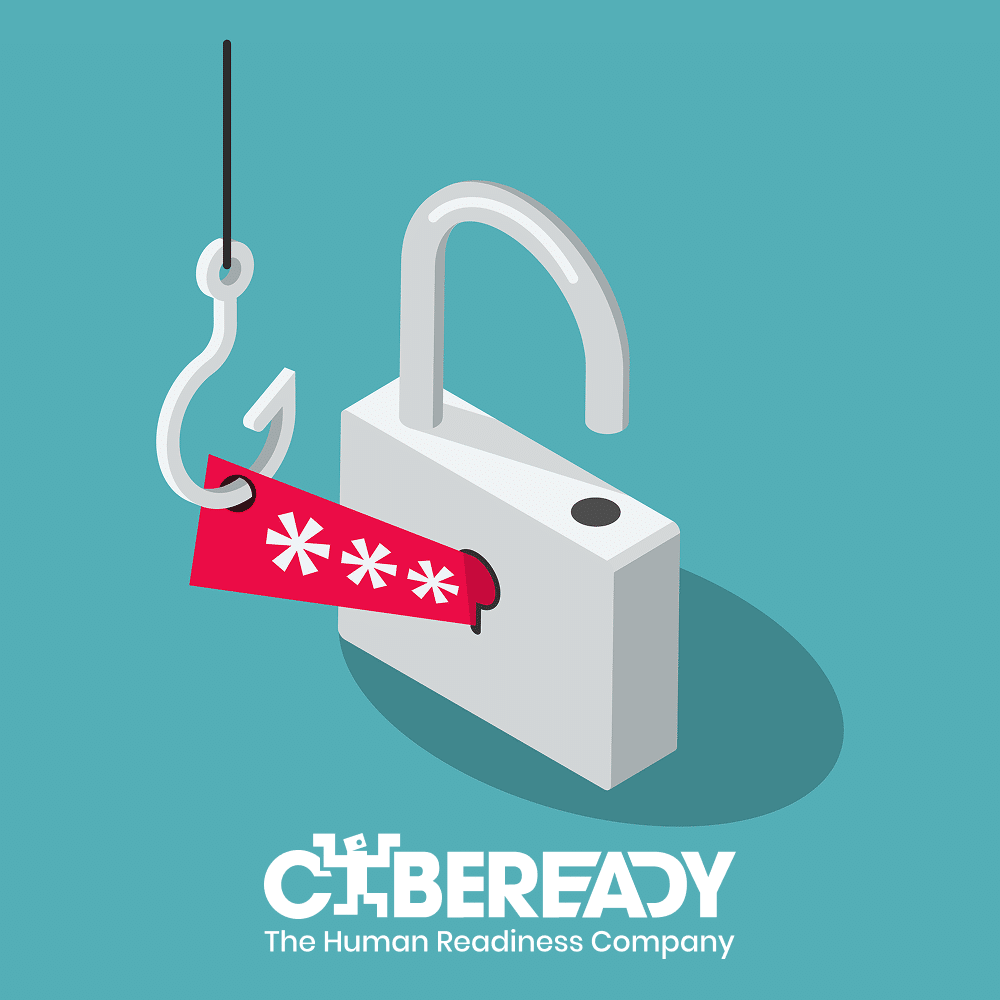Hackers and bad actors continue to get more creative and persistent in their attempts to access your data. All it takes is one vulnerability in your organization to let them in and create a data breach. In fact, the number of data breaches is growing steadily.
In 2021, by the end of September, 1,291 data breaches had occurred, surpassing the total number of breaches in 2020 by 17 percent. The financial impact of these breaches is spendy and growing. Over the last two years, the average cost of a data breach increased almost 10 percent—from $3.86 million in 2020 to $4.24 million in 2021.
Protecting your data from unauthorized access is critical to maintaining its confidentiality, integrity, and privacy. It means safeguarding your customer information, employee records, data collection, and transactional data from fraudulent activities like identity theft, phishing, and hacking. It involves training your employees on cyber security policies and practices to ensure data privacy and protection. By actively protecting your data, you reduce the risk of a data breach and the financial impacts when one occurs.
But data protection is no small undertaking. To help you make sense of it, this guide outlines what you need to know to ensure you do data protection right. It explains:
- Why data protection is important
- Why data protection fails
- How to provide effective data protection
- Tips and resources to guide you along the way
Keep reading to learn how to put your data protection plan to work.
What is data protection
Each day, billions of people around the world exchange their personal and financial data over the internet. The bulk of that data is based on purchases, information requests, and use of digital services. The plethora of shared data has given rise to the number of attack surfaces and, consequently, the demand to secure it from data leaks, theft, and corruption. Protecting this information is critical to prevent hackers from stealing or compromising it during a data breach.
Governments and industry regulators define data protection as encompassing:
- Data safety: Basic data protection measures that require all organizations to create data backups and enforce data retention processes.
- Data security: Data flow security that includes encryption protocols, stiff authentication processes, and threat monitoring solutions for faster incident response times.
- Data privacy: Continuous monitoring of third-party access to data and documentation of all data that leaves their ecosystem.
As data privacy continues to create challenges, consumers and organizations have pushed for regulations to keep their information safe from hackers. In response, industry regulators and government agencies have issued stringent data governance and protection standards worldwide.
One of these standards is the General Data Protection Regulation (GDPR)—a European Union (EU) law on data privacy and protection. In the UK, the government issued its own privacy law called the Data Protection Act 2018. And the US has several data privacy standards, including the California Consumer Privacy Act (CCPA) of 2018, Gramm-Leach-Bliley Act, and Health Insurance Portability and Accountability Act (HIPAA).

Why data protection is important
Data protection is important for the following reasons:
- Sustainable compliance: Strong data protection means you achieve sustainable compliance and avoid legal trouble and major fines. In 2018, British Airways learned this lesson the hard way. The company failed to protect over 400,000 personal records—a GDPR violation—costing it a £20 million ($27 million) fine and more after victims filed private lawsuits.
- Good data lifecycle management: Having the right infrastructure and monitoring technology automates data flows and streamlines communications within your ecosystems. You can safely store data at rest, creating end-to-end data protection coverage for optimized security.
- Better disaster recovery (DR) capabilities: No organization or database is immune to cybercrime. Strong data protection measures enable your organization to quickly respond to security threats, mishaps, and attacks. While your security team pinpoints the issues and restores backups, your legal team works to stay compliant.
As the average cost of a data breach exceeds $4.24 million this year, organizations can’t afford not to protect their data. By following data protection laws, you reduce your company’s risk of a data breach, avoid high-priced fines, and maintain your reputation.
Essential data protection terminology
As you prepare for better data protection in your organization, you must first understand these terms:
- Breach. An event when a threat actor accesses data, network connections, or devices without authorization. Also called a security breach or data leak.
- Compliance. Implementation of technological and practical security measures to meet a third party’s regulatory or contractual requirements. Examples include GDPR, HIPAA, and SOC 2.
- Cyberattack. Unauthorized access to a computer system, or network that’s intent on destroying or controlling technology systems by changing, deleting, locking, or stealing the data in them.
- Cybercrime. Theft of, or damage to, information caused by threat actors using technology or technical devices. Often the result of social engineering attacks, such as phishing, identity theft, and hacking.
- Cyber security. A strategic combination of technology, networks, hardware, software, systems, and training to protect information from unauthorized access.
- Cyber security awareness. Education and training programs for employees to learn how to protect themselves and their organization from and prevent cybercrimes. Part of an organization’s overall security policy.
- Data center. A physical location where an organization stores its data.
- Data protection. The practice of ensuring data safety, security, and privacy by using data protection software and following government regulations and organizational policies and procedures.
- Data protection officer. A key role in overseeing proper data handling, retrieval, and storage.
- Data protection standards. Industry and governmental laws and regulations for organizations to safeguard personal and sensitive data to maintain its safety, security, and privacy.
- Data protection awareness. A culture created by continuously training employees on the importance of data protection, privacy, and security.
- Hacker. A person who gains unauthorized access to systems, networks, or data by using technical skills and technology.
- Malicious actor. An entity with the potential to break through an organization’s security. Also referred to as a threat actor.
- Malware. A harmful computer program hackers use to access and destroy sensitive information using methods like trojans, viruses, and worms. More formally known as malicious software.
- Risk. The potential for exposure or loss that can result from a cyberattack or data breach.
- Security. The combination of people, policies, and tools to protect an organization’s assets and property.
- Security posture. An organization’s cyber security readiness is demonstrated by its employees and technology to protect its technical infrastructure, network, information, and equipment from a cyberattack.
- Simulation training. Cyber security training that mimics real-life attacks as they occur in an employee’s workflow.
- Threat. The potential for a hacker, insider, or outsider to access, damage, or steal an organization’s information, intellectual property, or data. Also referred to as a cyber threat.
- Virus. Malicious code (malware) that damages or steals data from computers and other devices as it spreads.
- Vulnerability. A flaw in the software code, system configuration, or security practices that hackers look for to gain unauthorized access to a system, network, or data.
- Zero trust. A layered security approach in which internal and external users must be authenticated, authorized, and validated to gain access to applications or data.
Why data protection fails
Your cyber security strategy is a complex mix of tools, policies, procedures, and training. Any vulnerabilities or weaknesses in that strategy can mean a failure in data protection, opening your organization up to a data breach. Take a look at the most common reasons data protection strategies fail.
No data protection officer
Data protection officers (DPOs) plan, set up, and enforce frameworks to protect data and safeguard sensitive information according to organizational requirements. In doing so, they help maintain business continuity while managing disaster recovery—a key aspect of today’s data protection laws.
Despite data protection regulations that require a DPO, many organizations neglect to fill the role. Only when it’s too late, they realize they probably needed one. Without a DPO, your organization is at greater risk of experiencing a data breach and fallout from it, including:
- Compromised data integrity
- Loss of reputation and trust
- Legal action
- Heavy fines from regulatory agencies
In fact, any of the following failures in data protection come with the same risks.
Inconsistent data protection standards
Data governance, privacy, and protection are a global priority for consumers and governments. As hackers and threat actors become increasingly clever in their tactics, governments around the world have established strict regulatory compliance for data protection, such as GDPR, CCPA, and HIPAA.
Despite government and regulatory agency efforts to enforce data protection standards, many organizations don’t follow them or don’t follow them consistently. Their lack of compliance puts the safety, security, and privacy of their data at risk of becoming compromised in a cyberattack.
Ineffective data protection software
The world produces a lot of data—74 zettabytes (ZB) projected for 2022 and 175 ZB estimated by 2024. Hackers and threat actors are anxious to get their hands on this data, constantly looking for weaknesses in data protection so they can claim it.
Unfortunately, organizations might choose not to invest in the right data protection solutions because of a lack of resources or added expense. As a result, they end up with:
- Unsecured data
- Unprotected data privacy
- No way to back up, recover, and restore their data
Without the right mix of data protection software in place, organizations increase their chances of data theft, loss, and misuse, especially of sensitive data.
Insufficient data center protection practices
Data centers hold vast amounts of information and are often the backend of critical business services. For these reasons, they’re a prime target for external attacks, including distributed denial of service (DDoS), ransomware, and brute-force attacks.
Insufficient data center protection happens when organizations skimp on protecting the following areas:
- Physical environment
- Physical and remote access
- Data and network
- Hardware and software
- Network
Taking shortcuts on protecting your data center is a big risk for any organization. Yet many do, only to have their entire data center come down in a flash from just one attack.
Lack of cyber security awareness
Your employees are the glue that holds your data protection strategy together. Yet, employees cause 95 percent of all data breaches. After all, they’re human, and humans make mistakes. The problem is a lack of cyber security awareness training.
Without effective cyber security awareness training in place, employees aren’t aware of rules and protocols for:
- Following data handling, protection, and security
- Complying with safe security practices
- Reacting to social engineering schemes like phishing
- Reporting cyber security threats and data breaches
As technology evolves, hackers continuously adjust their tactics, intensifying the damage and lasting impact they create. Despite cyber security protection strategies, hackers and threat actors will continue to look for the weakest link—human error.

How to achieve successful data protection
The key to successful data protection is to create a well-rounded strategy that covers every aspect of your data: where it’s stored, how it’s used, and how it’s shared. To start on the path to successful data protection, begin with the following five steps.
1. Appoint a data protection officer
These days, with the increasing rates of cyberattacks and data breaches—and no slowdown in sight—organizations need a dedicated data protection officer. Hire or outsource the role or promote an existing employee to the role. Regardless of how you go about filling the DPO role, choose a highly qualified person with a strong background in cyber security, compliance audits, and leadership.
By appointing a DPO, you have someone to:
- Oversea the big picture of data beyond the physical and technological aspects of security.
- Ensure your organization complies with data privacy and protection laws.
- Make sure your organization passes all audits.
- Educate your employees on data handling protocols and compliance requirements.
The DPO enables you to have a sole person to focus on your organizational data and establish a strategy to protect it.
2. Follow the principles of data protection
The principles of data protection help secure the personal data your organization uses, stores, and shares. Specifically, they protect the names, addresses, phone numbers, email addresses, and credit card information of your employees, customers, and third parties.
The principles vary across governments and industries but address data fairness, transparency, accuracy, storage, integrity, and confidentiality. Each principle plays a key role in protecting data and data privacy.
Follow the data protection principles for your industry and regions where you do business. By following them, you achieve:
- Sustainable compliance
- Good data lifecycle management
- Improved disaster recovery capabilities
3. Choose the right mix of data protection software
Dedicated data protection software solutions play a pivotal role in your security stack. Solutions are available for all sizes of organizations—from small-to-medium businesses to enterprises. They also cover on-premises, hybrid, and cloud environments.
Data protection doesn’t come from just one solution but a combination of them to:
- Ensure proper data backup, recovery, and restoration in case of an attack.
- Secure their data by using encryption, authentication, and access control.
- Safeguard data privacy through policy enforcement and data governance.
By choosing the right mix of data protection software that covers these three areas, you’ll be more equipped to follow data privacy and protection laws and keep your data safe.
4. Protect your data center
Data center protection goes beyond just securing the servers and networks it houses. It means investing in the right tools, solutions, and resources to:
-
- Secure the physical environment by finding an optimal location, raising the floor, and preparing for natural disasters, particularly damage from fire, water, or pests.
- Restrict and monitor physical and remote access by maintaining vigilance, layering access, and securing remote access.
- Safeguard your data and network by taking on a zero-trust posture and reviewing security policies.
- Update the hardware and maintain the software that runs your data center.
- Establish a data backup and run regular data backups.
- Segment your data center network to limit the extent of a data breach if one occurs.
Take the extensive measures to monitor and protect your data center around the clock, both physically and virtually, to keep it secure.
5. Create cyber security awareness
One of the most critical parts of every cyber security and data protection strategy is to create a culture of awareness across your entire organization. That culture starts with a cyber security awareness training program.
Building cyber security awareness is most effective when you:
- Train all employees based on their role, localization, and cultural differences.
- Prioritize the key areas that require training based on risk, such as types of phishing.
- Deliver text-based content in shorter bites right in the workflow.
- Continuously train employees all year long.
- Measure effectiveness based on program metrics, not click rates.
- Identify and reduce the number of high-risk employees.
- Evaluate the return on investment of your training solution based on data analytics.
By providing continuous training, you can adjust your program as needed to account for new types of cyber threats as they arise to keep your employees informed, aware, and prepared to react to them.
Safeguard your data with data protection training
When you provide effective data protection training, you give your employees a better understanding of safe data handling practices for data entry, processing, storage, and sharing. You also make them more aware of data protection and privacy laws, so they understand the criticality of protecting your data. When providing data protection training to your employees, include the following topics.
Government and industry compliance requirements
Governments worldwide have pushed for tight regulations to protect the privacy of citizens. These regulations have resulted in creating well-known standards—each with its own criteria that organizations must follow to avoid fines and penalties.
If your company must abide by the government and industry standards related to your business, include them in your data protection training program. Go through the key regulations, the audits your company must pass, and your employees’ roles in upholding those standards.
Data center security strategy
Your data center security strategy requires a multilayered approach. The more layers it has, the better it will protect the confidential information it holds. These complex layers can be difficult for employees to understand, so it’s critical to include them as part of your data protection training.
In particular, include the following general areas, but outline as many essential details as needed:
- Both physical and remote access to the data center
- Data handling practices
- Security for your network, data, hardware, and software
Document each policy, so your employees can refer to them and help keep your data center secure.
Safety protocols for personal data
Hackers use brute-force attacks and social engineering campaigns to try to gain access to your systems, networks, and sensitive organization and employee data. To prevent these threats from reaching your personal data, you might have safety protocols in place. The policies are only helpful if your employees reinforce them.
Therefore, make sure your data protection training program includes your organization’s protocols for protecting personal data. For example, include password requirements, use of multi-factor authentication (MFA), and single sign-on (SSO). Also, address protocols about credential sharing and security codes.
Supply chain policies
As data breaches to the supply chain increase and intensify, ensure you have policies in place to secure your supply chain. This guidance helps employees be better prepared to face an attack in an intelligent, strategic, and secure way.
So, include supply chain policies as part of your data protection training. Address your policies for selecting and verifying suppliers, conducting risk-level assessments for third parties, and securing your software supply chain from end to end. Also, include supply chain risk management practices specific to the supply chain.
Cyber security risk assessment
Regular cyber security risk assessments help identify corporate assets that can be affected by a security breach and how well your access controls can protect them.
As part of your training program, make sure employees understand the importance of cyber security risk assessments. Explain the findings of the reports to help them understand where your organization has vulnerabilities and how they can be more effective in protecting them.
Breach reporting protocols
All data privacy regulations require organizations to report data breaches immediately. Once reported internally, your organization must notify authorities and the victims whose personal information has been compromised.
In your data protection training, make sure employees know the procedures to follow when a breach occurs and after one happens. The protocols may vary by role, team, and department, so make sure everyone knows what to do and who to contact for questions.
Phishing simulation training
As a first step in preventing phishing attacks, include phishing simulation training. With effective training, some employees can detect and protect themselves against phishing, but the key is to transform your entire organization’s overall security culture.
Phishing simulations provide interactive, hands-on training to help employees learn about and react to phishing threats. You can deploy real-life phishing simulations right in your employees’ workflow. When combined with real-time engagement statistics and insights, your security team can determine the right course of action for employees to take next.
Security awareness training for all employees
To keep up with the ever-changing, mischievous ways of cyber criminals, train employees on hacking threats and trends so they can be aware of them and respond confidently to prevent them. This “awareness” starts with cyber security awareness training for all employees across the organization, regardless of their role.
Provide security awareness training at regular intervals by using bite-sized, customizable content that you can adapt to employees by job role, team, department, or geographic location. As with phishing simulations, use data to gauge the success of your training program, so you know which employees need more or specialized training and which ones can advance to the next topic.

Tips for effective data protection training
Sure, you have all the latest technology to secure and monitor your data. But the real protection starts with training all employees in your organization to achieve effective data protection. Follow these tips to ensure your data protection training program engages your employees in effecting behavioral change toward data protection and cyber security awareness.
1. Deliver bite-sized, text-based training
Deliver Continuous Awareness “Bites” (CAB) in the form of short, text-based training, so employees can learn at their own pace and on their own time. This approach gives them to repeat and diverse situations backed by data-driven training. It also creates multiple engagement opportunities for optimal retention. By using highly adaptable and customizable text-based bites, your employees get the essential training they need to support your organization’s data protection policies.
2. Embed training in your employees’ workflow
Deploy your bite-sized, text-based training by using a just-in-time learning approach right in your employees’ inbox as part of their regular workflow. Attach your training to events to make them relevant and memorable and to create greater engagement. Then, when your employees find themselves in a vulnerable position, they’re motivated to learn how to avoid repeating an error.
3. Run continuous training all year long
Change your employees’ behavior toward cyber security and data protection by deploying a training program that runs year-round. Use an autonomous solution that can run every day, all year long. The training program must automatically adapt for each employee and continue sending each bite until they complete the learning.
4. Customize training based on your employees’ roles
Customize your training so it reflects the end user’s perspective with immediate relevance. This way, they’ll be motivated to take time to learn. The training is most effective when you can adapt content based on each employee’s role, experience, geographic location, and preferred language.
5. Measure training effectiveness based on real-time data
Regularly monitor your data protection training program’s progress to determine its effectiveness and optimize it as needed. When you measure your data protection training, you must be able to clearly identify your high-risk employees, gauge the mean-time between failures (MTBF), and determine the resilience of your teams, departments, and overall organization.
6. Use a machine learning-based platform to change employee behavior
Advanced machine learning in data protection training uses your organization’s training data to analyze employee performance statistics. It tailors continuous learning to each employee’s weak spots and follows a just-in-time learning approach. Ensure your data protection training program leverages data science and machine learning to identify and minimize high-risk groups in the organization, including new employees, employees with access to sensitive data, and serial clickers.
7. Provide compliance training
Your data protection training program is critical to your organization’s ability to comply with the leading data protection regulations. Make sure your data protection training program keeps current on data protection compliance and regulations as they evolve. By having your employees follow them, you create greater security between your business and your customers from potential cyber threats. You also reduce your risk of paying large fines when a data breach occurs.
Resources for data protection
As you plan your data protection training program, follow the guidance in our list of resources.
Kick-off a meaningful security awareness program
Organizations want to train for everything, but they struggle to train for anything effectively. When creating an effective data protection awareness program, focus on three key areas: the most important threats, employee needs, and providing continuous training. Learn what each area entails and how to move from theoretical learning to modifying employee behavior in 3 Tips for Kicking-off a Meaningful Security Awareness Program.
Follow tried and true cyber security awareness tips
Cyber security awareness is just as critical to your organization as the security measures you take to protect your home. Your organization simply can’t afford to be without it. By establishing cyber security awareness policies and practices, you position your employees and organization to avoid cyberattacks and keep your business operating at full speed. To increase cyber security awareness in your organization, follow the 13 can’t-miss cyber security awareness tips.
Train global and diverse workforces
Top-tier manufacturing company SodaStream is best known as the maker of the consumer home carbonation product of the same name. When the company experienced a steady increase in phishing attacks, they realized a need for cyber security training across their workforce—from manufacturing to management. Learn how the company trained their employees in How to Train a Global and Diverse Workforce to Reduce the Risk of Cyberattack.
Comply with SOC 2 requirements
SOC 2 compliance ensures organizations have proper procedures in place to safeguard private information and quickly mitigate cases when data leaks happen. It has become the seal of approval required by organizations to assure customers that their personal information is secure.
To ensure your organization passes SOC 2 compliance, you must complete seven steps. Learn what these steps are and download a corresponding checklist in The Only SOC 2 Compliance Checklist You Need.
Launch your data protection program
In this guide, you learned how to deliver an effective data protection training program. As you launch your program, include these seven essential practices:
- Deliver continuous data protection and cyber security training for your employees to create awareness and change.
- Provide employees with a hands-on learning approach that’s easy to put into practice.
- Identify low-risk to high-risk employees so you can target specific interventions based on their risk level.
- Optimize employee learning experiences based on predictive analytics collected by your training program.
- Close the security gap between your employees and organization by providing real-time feedback.
- Tackle employees’ attitudes and beliefs about threat risks and attacks head-on.
- Adopt a scientific training method that brings together learning expertise, data science, and automation.
Without the right data protection and cyber security awareness training program in place, cyber threats and attacks will persist. Follow these seven essentials for your cyber security awareness employee training program to reduce malicious attacks caused by employee error.
Get data protection training from CybeReady
Achieve success with your training program by choosing a platform based on learning expertise, data science, and automation. CybeReady makes data protection and security awareness training easy and effective for organizations. Learn how when you request a demo!
















